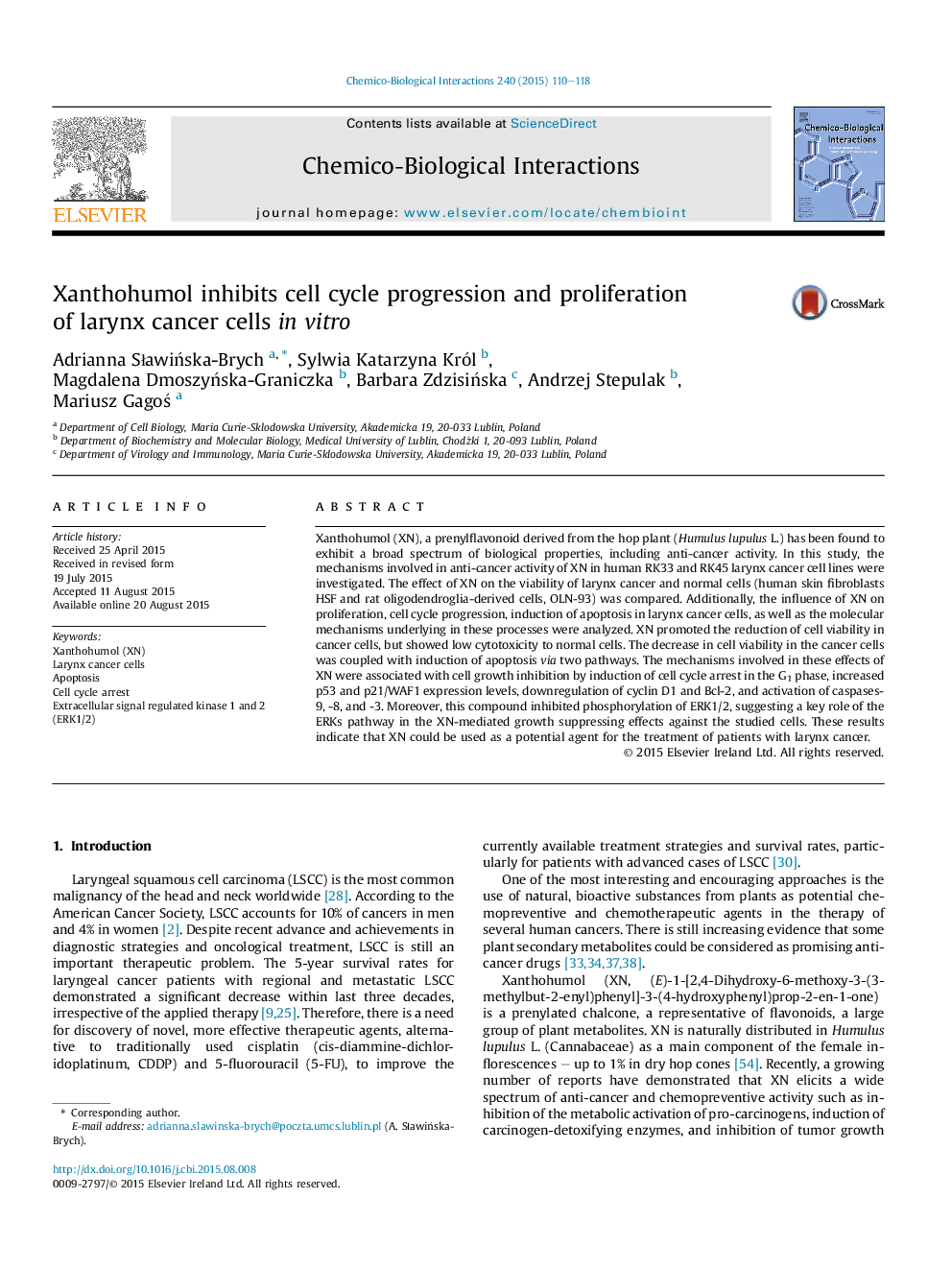| کد مقاله | کد نشریه | سال انتشار | مقاله انگلیسی | نسخه تمام متن |
|---|---|---|---|---|
| 2580120 | 1561601 | 2015 | 9 صفحه PDF | دانلود رایگان |

• Xanthohumol as an inhibitor of larynx cancer cell proliferation.
• Xanthohumol induced G1/S cell cycle arrest.
• Xanthohumol exerts proapoptotic activity in larynx cancer cells.
• It affects ERK signaling pathway.
• It may be useful in the cure of patients with larynx cancer.
Xanthohumol (XN), a prenylflavonoid derived from the hop plant (Humulus lupulus L.) has been found to exhibit a broad spectrum of biological properties, including anti-cancer activity. In this study, the mechanisms involved in anti-cancer activity of XN in human RK33 and RK45 larynx cancer cell lines were investigated. The effect of XN on the viability of larynx cancer and normal cells (human skin fibroblasts HSF and rat oligodendroglia-derived cells, OLN-93) was compared. Additionally, the influence of XN on proliferation, cell cycle progression, induction of apoptosis in larynx cancer cells, as well as the molecular mechanisms underlying in these processes were analyzed. XN promoted the reduction of cell viability in cancer cells, but showed low cytotoxicity to normal cells. The decrease in cell viability in the cancer cells was coupled with induction of apoptosis via two pathways. The mechanisms involved in these effects of XN were associated with cell growth inhibition by induction of cell cycle arrest in the G1 phase, increased p53 and p21/WAF1 expression levels, downregulation of cyclin D1 and Bcl-2, and activation of caspases-9, -8, and -3. Moreover, this compound inhibited phosphorylation of ERK1/2, suggesting a key role of the ERKs pathway in the XN-mediated growth suppressing effects against the studied cells. These results indicate that XN could be used as a potential agent for the treatment of patients with larynx cancer.
Journal: Chemico-Biological Interactions - Volume 240, 5 October 2015, Pages 110–118